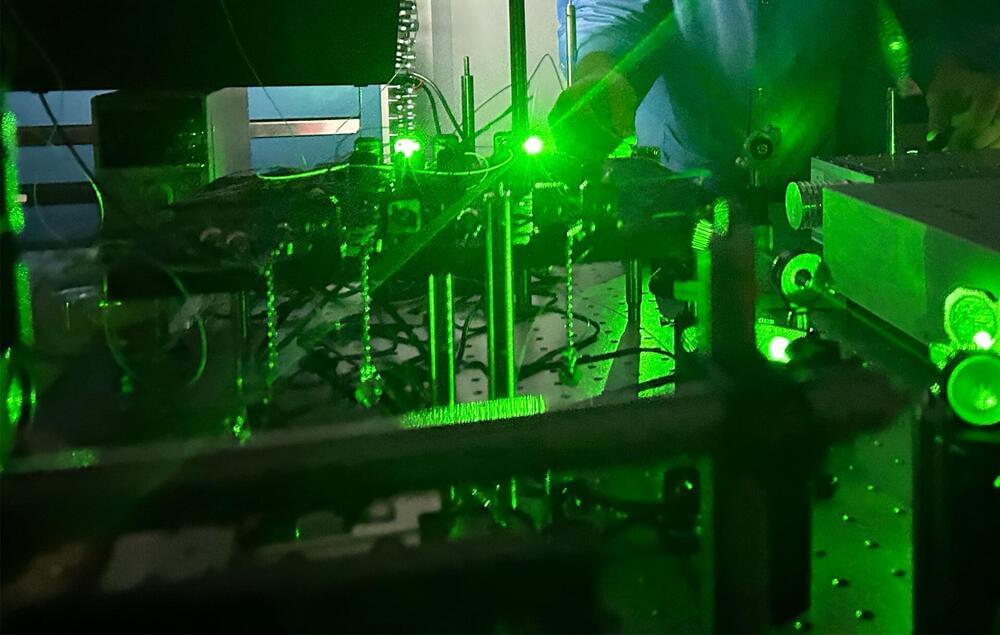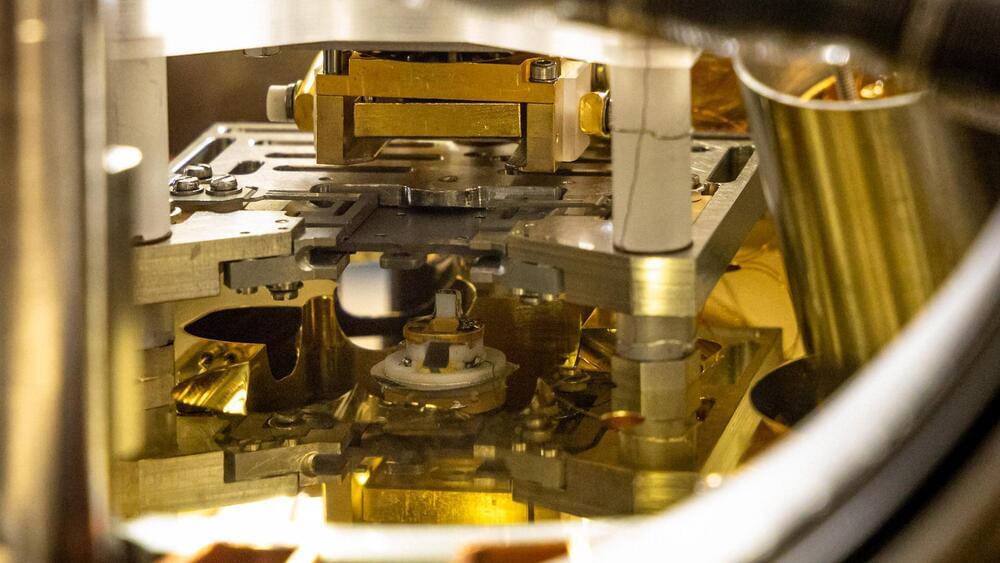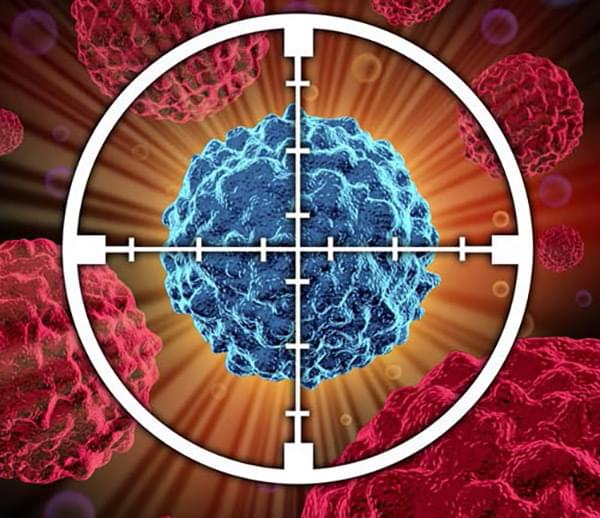Using laser light, researchers have developed the most robust method currently known to control individual qubits made of the chemical element barium. The ability to reliably control a qubit is an important achievement for realizing future functional quantum computers.
The paper, “A guided light system for agile individual addressing of Ba+ qubits with 10−4 level intensity crosstalk,” was published in Quantum Science and Technology.
This new method, developed at the University of Waterloo’s Institute for Quantum Computing (IQC), uses a small glass waveguide to separate laser beams and focus them four microns apart, about four-hundredths of the width of a single human hair. The precision and extent to which each focused laser beam on its target qubit can be controlled in parallel is unmatched by previous research.









